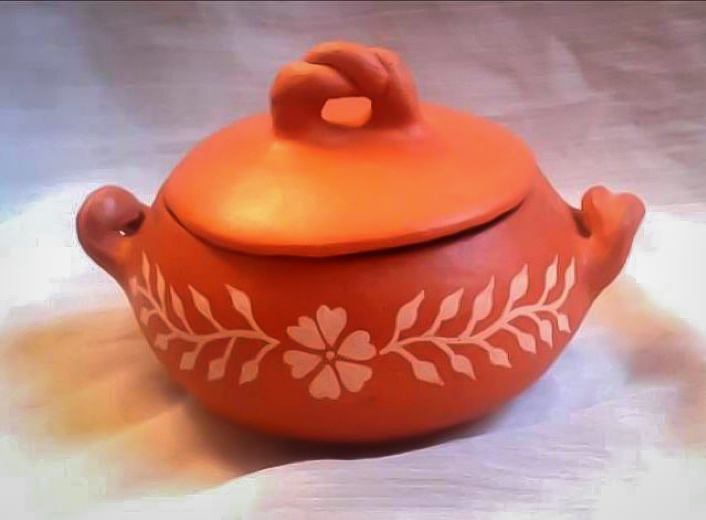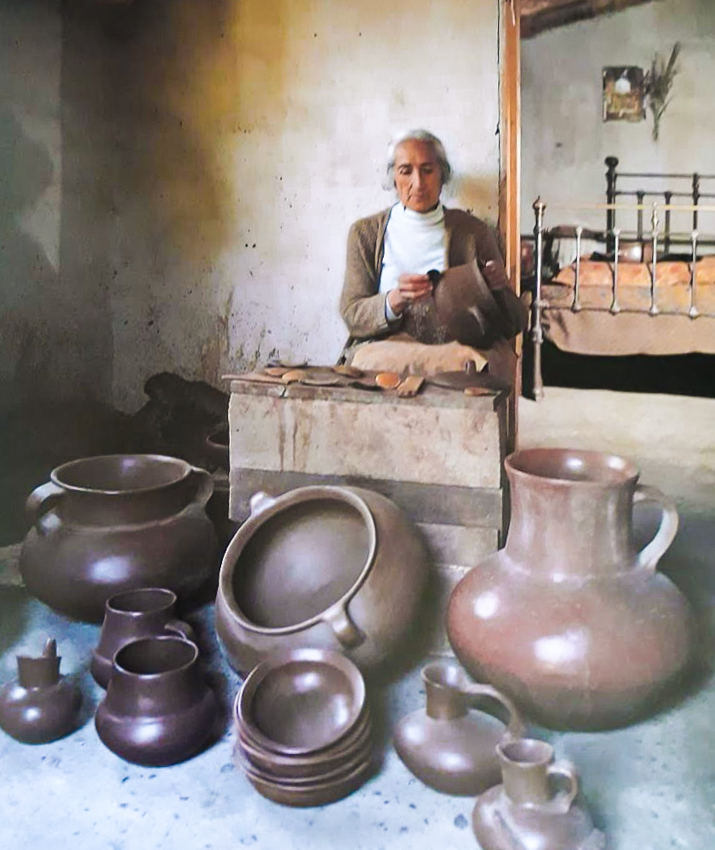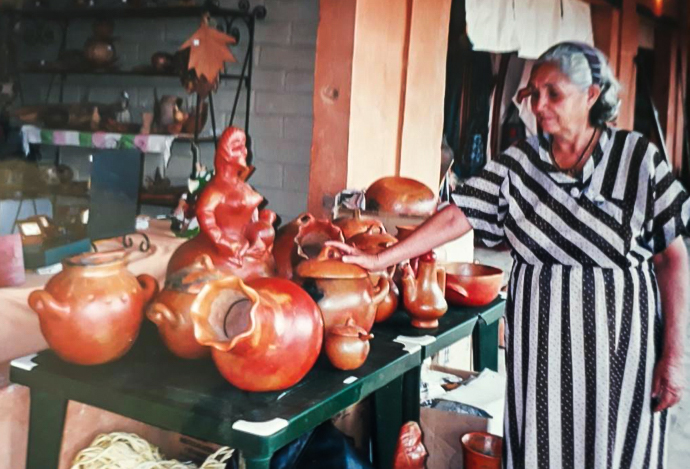Description
La cerámica es un arte vinculado con la cultura y creencias aborígenes, quienes creaban en barro imágenes de sus deidades; fabricaron instrumentos musicales; elaboran vasijas y utensilios para conservar alimentos, preparación de pócimas y bebidas, así como vasijas para usos ceremoniales
Desde tiempos inmemoriales, las alfareras o loceras como les llaman. han mantenido la tradición de hacer vasijas utilitarias en barro, con técnicas prehispánicas. Elaboran ollas, vajillas, jarrones, tinajas, anafes, floreros, múcuras, cazuelas, budares. Las piezas son hechas a mano, sin utilizar torno y la quema se hace a fuego abierto.
Los centros de producción se encuentran en casi todo el territorio nacional. Siendo los lugares más importantes los que están en los Estados Lara Mérida Trujillo y Táchira con zonas ricas en tierras alfareras. En el Oriente del país se destacan las producciones de Isla Margarita, Caigua en el Estado Anzoátegui y Manicuare.
En la Península de la Guajira, las mujeres wayuu fabrican urnas funerarias denominadas “julá a”, vasijas donde se depositan huesos de los difuntos, un tipo de entierro secundario, de acuerdo a las prácticas rituales.
La técnica que conservan las alfareras es de procedencia prehispánica. Una breve descripción será de esta manera:
La arcilla se tritura, se cierne, incorporándose el desgrasante, luego se agrega agua. Se deja reposar y se amasa; se usa el tradicional enrollado, sobre una base se colocan tiras de arcilla superpuestas, uniéndose entre sí con agua, como anillos o espirales. Con un trozo de totuma Fruto duro del árbol totumo) se alisa y se bruñe. Se seca, se pinta con engobe y se pule nuevamente con una piedra. Las decoran trazando líneas en alto relieve de arcilla blanca o roja, con diseños geométricos y arabescos.
Pese a que las vasijas perdieron su valor de uso, se siguen produciendo para atender la demanda por ser piezas muy decorativas y con alto valor cultural.
English
Pottery
Pottery is an art linked to the culture and beliefs of the aborigines, who created images of their deities in clay; they made musical instruments and made pots and utensils to preserve food, prepare potions and drinks, as well as pots for ceremonial uses.
Since time immemorial, the potters or “loceras” as they are called, have maintained the tradition of making utilitarian vessels in clay, using pre-Hispanic techniques. They make pots, crockery, vases, jars, flower vases, “múcuras”, casseroles, “budares”. The pieces are made by hand, without the use of a potter’s wheel, and the firing is done over an open fire. The production centres are located almost everywhere in the country. The most important places are in the states of Lara, Mérida, Trujillo and Táchira, which are rich in pottery-producing areas. In the east of the country, the production of Isla Margarita, Caigua in the state of Anzoátegui and Manicuare stand out.
In the Guajira Peninsula, Wayuu women make funeral urns called “julá”, vessels in which the bones of the deceased are placed, a type of secondary burial, in accordance with ritual practices. The technique preserved by the potters is of pre-Hispanic origin. A brief description will be as follows:
The clay is crushed, sifted, incorporating the degreaser, then water is added. It is left to stand and then kneaded. The traditional rolling method is used, where strips of clay are placed on top of each other on a base and joined together with water, like rings or spirals. A piece of “totuma”, the hard fruit of the totumo tree, is smoothed and burnished, dried, painted with engobe and polished again with a stone. They decorate them by tracing lines in high relief in white or red clay, with geometric and arabesque designs. Although the pots have lost their value in use, they are still produced to meet the demand as decorative pieces with a high cultural value.





Reviews
There are no reviews yet.